The Fauna of the Iberian Peninsula

As it has mountains, coasts, rivers, and cliffs, the Iberian Peninsula enjoys a very diverse fauna. In this article, we’ll tell you about some of the animals that live in Spain and Portugal.
The fauna of the Iberian Peninsula
In this region, you can find fish, reptiles, amphibians, mammals, and hundreds of different species of birds. However, the most common fauna is the following:
1. Iberian lynx
This carnivore is endemic, as it only lives in the Iberian Peninsula. In fact, it lives in Sierra Morena, the Montes de Toledo, and the Sierra de Cardeña y Montoro Natural Park. This animal prefers forests and bushes where it can hunt rabbits, which represents 90% of its diet, and hide in the grasslands.
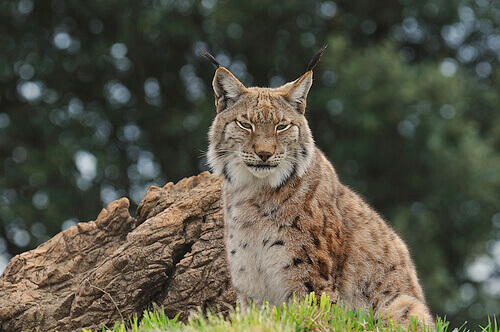
However, the Iberian lynx is endangered due to the destruction of its natural habitat and the decline in the wild rabbit population. Humans are also guilty of this. They hunt them down, even if it’s illegal, or accidentally run them over.
2. Iberian ribbed newt
This unique animal is a small amphibian (of no more than 12 in) that’s endemic to this area.
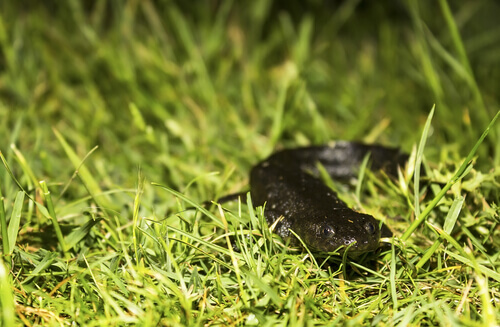
It has a big head and small, bulging eyes. In addition, its body is covered with black or yellow spots and with orange markings on the sides. Although it’s harmless, it can secrete venom that’s deadly for insects or tadpoles. It spends most of its life in the water. Another interesting fact here is that the female lays up to 1,000 eggs.
3. Great bustard
This bird, in addition to being part of the fauna of the Iberian Peninsula, also inhabits Central Europe. It’s mostly sedentary. Instead of flying when disturbed, it prefers to run very fast.
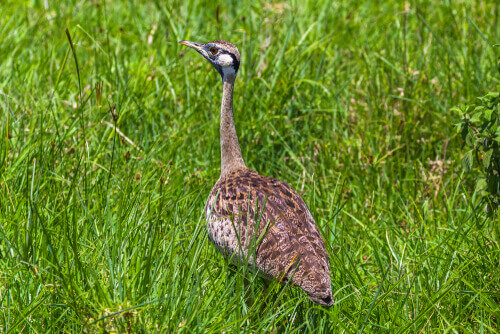
The great bustard is big and heavy. Its plumage is more striking in males (what’s known as sexual dimorphism). In addition, females are about a third smaller than males. Both sexes are silent and meet in flocks during the winter. However, males and females don’t mix outside the breeding season.
4. Iberian wolf
This subspecies of the grey wolf is endemic to the peninsula. In fact, it lives mainly north of the Douro river, in the communities of Asturias, Cantabria, Galicia, and Castilla y León.
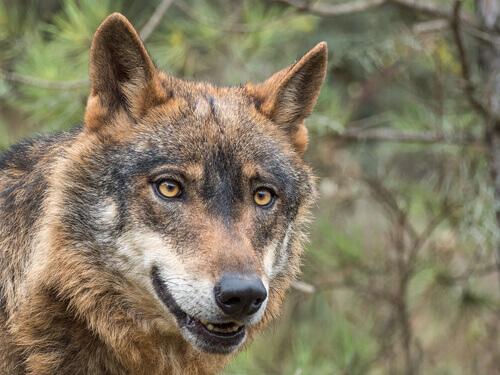
As for physical characteristics, it’s worth noting that males and females are quite similar. However, their weight differs. Males weigh around 110 pounds, and females around 55 pounds. Its head is big, its ears triangular, and its coat is heterogeneous, with dark marks.
In addition, it’s one of the few large carnivores that inhabit the region. It feeds on herbivores and small animals. Sometimes, it even competes with scavenger birds for food.
5. Spanish imperial eagle
This is an endemic endangered bird. In fact, there are only about 400 pairs left in the wild. It’s big and has dark plumage, except in the upper part of the wings and shoulders. In addition, it can live up to 20 years and reaches sexual maturity at age five.
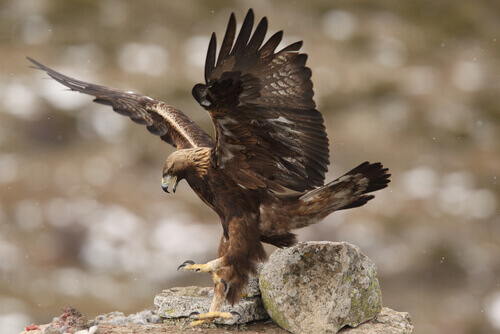
It lives in pine forests, mountains, dunes, and coastal marshes, where there are a lot of rabbits. Each pair has its own area, which is divided into three: nesting, near feeding, and far feeding.
6. Montpellier snake
This scaly reptile can measure up to seven feet long and its tail can measure up to 25% of its total size. Although it’s venomous, the venom in its fangs isn’t dangerous to humans.
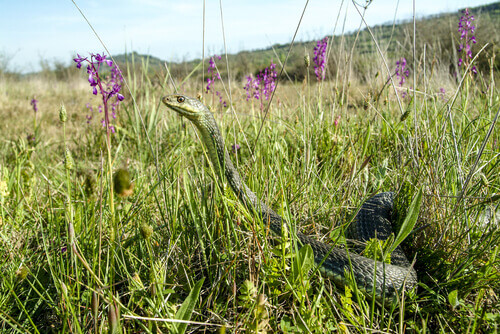
This snake is aggressive, fast, and active, and feeds on small mammals, lizards, and birds. In addition to living on the Iberian Peninsula, it can also be found in North Africa and Southeast France.
7. Sturgeon
This is the most common fish on the peninsula, and it lives in the Guadalquivir, Tajo, and Ebro rivers, as well as in Central Europe. It’s very big, and specimens as big as 660 pounds have been caught. It lives long, as its average lifespan is 50 to 60 years. The body of the sturgeon is long and has no scales. The belly is white, while the back is brown or gray.
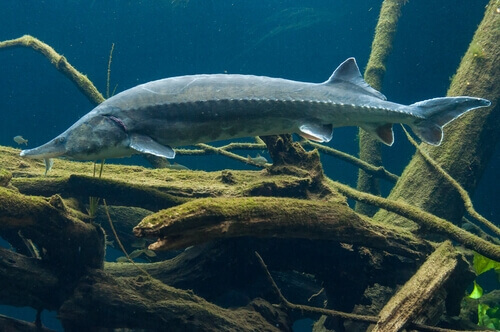
This text is provided for informational purposes only and does not replace consultation with a professional. If in doubt, consult your specialist.